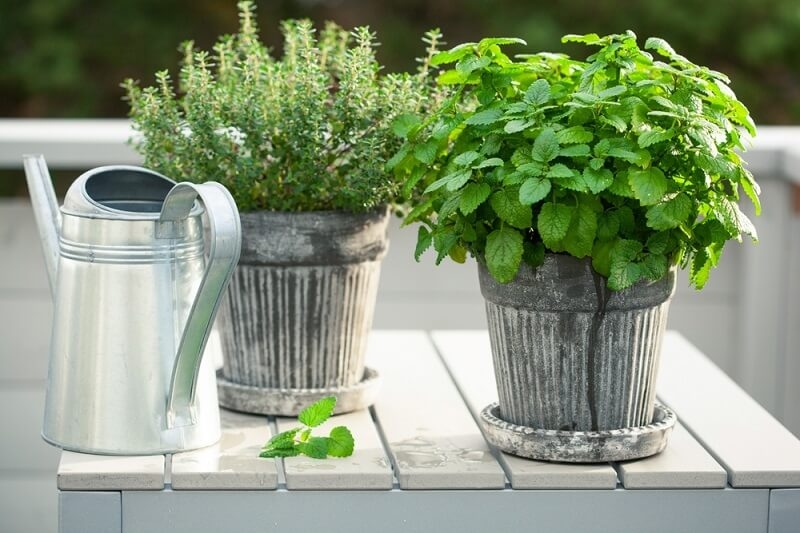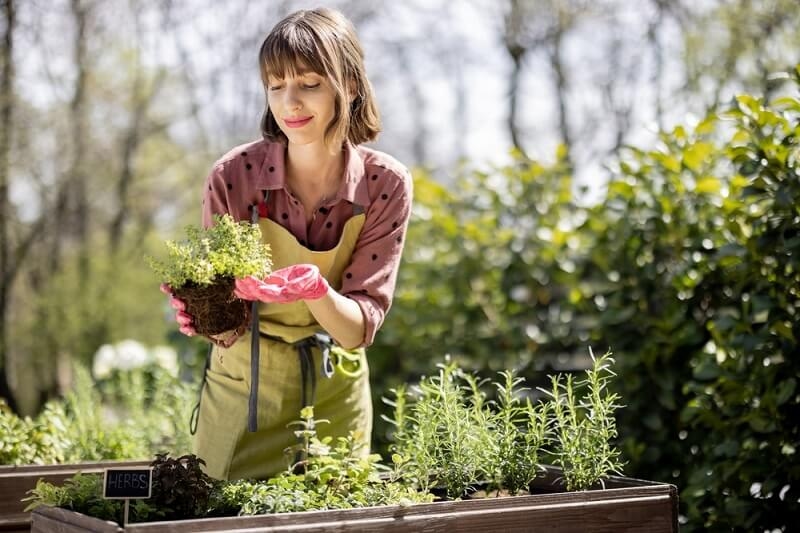
Planting a herb garden is among the most gratifying activities at home. Fresh herbs not only make foods tastier but also add a smell to your home and give you the pleasure of gardening, even when you have very little space in your balcony or windowsill. It might seem daunting at first, but with the proper precautions, you can have all year-round access to healthy and delicious herbs. This tutorial will take you through the fundamentals of caring for a herb garden, from planting to harvesting, in a simple and easy-to-understand manner.
You do not require a large backyard when it comes to the herb garden you are planning on starting. The herbs can be planted successfully in their pots, small Planters, or even inside with a sunny window. Raising them is not as tricky as it might seem, but it does need some crucial habits. In this part, we shall examine the key measures to ensure your herb garden is well-maintained, to ensure your plants grow.
When you are a beginner gardener, you should begin with low-maintenance fast fast-growing herbs. Among the most readily available ones, basil, mint, parsley, chives, and oregano can be listed. These herbs are fast-growing, and even when you are not careful, they recover. They are also universal cookers, hence a good selection for first-time gardeners.
Herbs grow well in well-draining soil. The roots can rot in case the soil is too heavy or contains too much water. Most herbs grow best in a combination of potting soil and compost added to it. Especially potted soil mixes containing herbs are also available at garden centers. Never leave your pots without drainage holes to avoid stagnant water.
Most herbs love sunlight. Locate your pots or garden bed in an area where the sun covers at least 6 hours a day. When you are planting herbs indoors, ensure that you put them close to a south-facing window or get a grow light to supplement the natural light. The sun rays contribute to the formation of good flavors of the herbs and therefore never omit this process.
A lot of individuals in the USA are living in flats or houses with little access to the outside world. Fortunately, it is entirely possible to cultivate the herbs in the house with proper attention. The herbs can be used to add freshness to your dishes all year round.
Select the window receiving the most natural light, which hopefully is a south or southwestern-facing one. In case your house lacks natural light, you should invest in LED grow lights to supplement the light of your herbs. The place must also be well-ventilated yet not too windy.
Pots are your friends when you are planting herbs indoors. Medium to small-sized containers with holes to drain are ideal. Planting many herbs in a single pot should be avoided, as they will be competing in terms of nutrients and water. One or two herbs per pot will be the most effective.
The indoor herbs tend to dry easily compared to the outdoor ones, especially during the winter season when heating systems are on. To determine whether the soil is dry or not, put your finger about an inch into the soil. If it is, then it’s time to water. Do not water too much, or the roots will be ruined.

Basil is one of the most famous herbs in American kitchens. Fresh basil is used to add a tasty flavor to pasta sauces as well as salads. But basil requires a small amount of extra attention as compared to other common herbs.
One of the most common mistakes beginners make is improper watering. Too much or too little water can harm herbs, so finding the right balance is key. Healthy watering habits help your plants stay strong and flavorful.
The easiest way to check if your herbs need water is by feeling the soil. If the top layer is dry, it’s time to water. Most herbs prefer slightly dry soil rather than soil that stays soggy. Keeping this balance prevents root problems and keeps herbs tasting fresh.
The watering can you use must have a narrow spout to enable you to spray the water onto the soil rather than the leaves. Water gradually percolates so that the soil absorbs the water uniformly. This method also helps prevent fungal diseases that often develop on damp leaves.
Root rot is mostly caused by overwatering. Good drainage of pots is always a good idea. Conversely, over a long time, one might fail to water and that may dry the roots and wilt the herbs. It is important not to go to extremes but to stay consistent.
Despite the care, the best advice, the herb gardens may encounter difficulties. Never mind, most issues can be resolved once you realize there is a problem. Paying attention early prevents small problems from turning into bigger ones.
When your herbs begin turning yellow, it is normally an indication that they are receiving excessive water or not enough sunlight. Reschedule your watering schedule and relocate them to a more sunny location.
Herbs may have small pests such as aphids, spider mites, or whiteflies. In order to contain them, spray the leaves with water and a little soap. The alternative is the use of neem oil, which is safe for most herbs.
In case your herbs are not growing as quickly as they should, there might be a deficiency in the soil. A compost or some organic fertilizer can provide them with the push. Treatment should also ensure that they are not crammed in their pots and that they receive adequate sunlight.
Planting herbs is an enjoyable activity that adds new tastes to your dishes and makes you feel like an achiever. To start with, the success keys for beginners are easy herbs, ample sunshine, water, and timely resolution of the problems. Your herb garden is going to give you fresh and tasty leaves for your favorite food with regular maintenance. It does not matter whether you are taking care of basil plants, learning how to cultivate herbs indoors, or solving small problems; the process is easy as soon as you want to know the fundamentals.
This content was created by AI